Trees are integral to so much of our lives, and to our survival as a race.
Trees absorb carbon dioxide, and store a huge amount of carbon in their tissue, making them really important to the environment.
They’re also good for our wellbeing – studies show that patients recover quicker if they can see trees from their hospital beds.
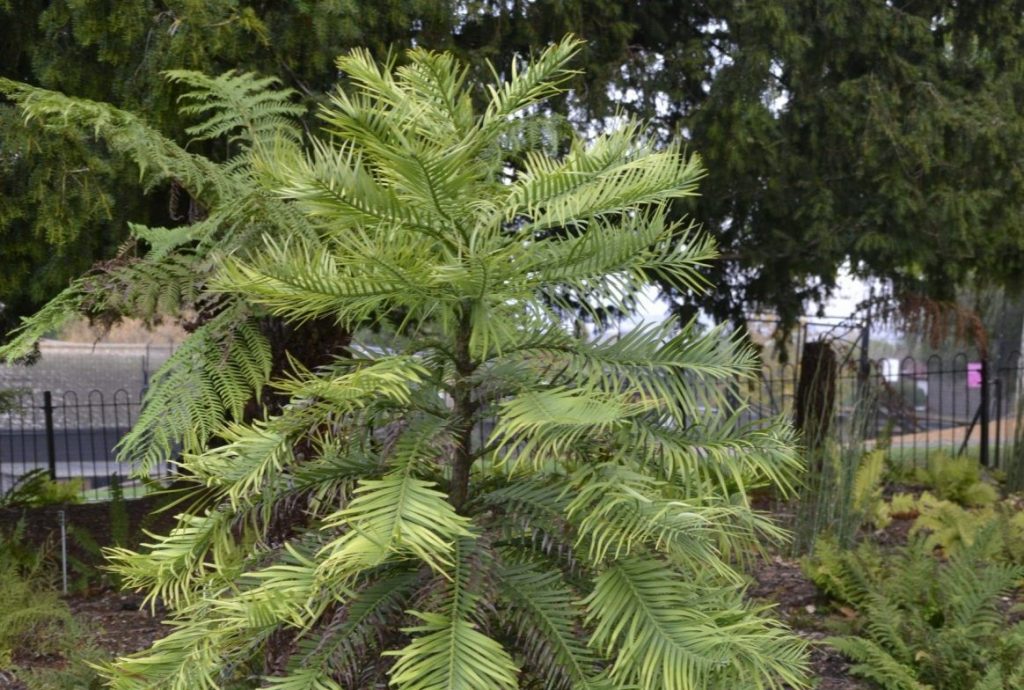
Wollemi Pine
Scientific name: Wollemia nobilis
Location: Prehistoric Garden
The Wollemi Pine was thought to be extinct until 1994 when a specimen was discovered in a remote ravine, 200km north of Sydney, Australia. It’s now the only species left of an ancient type of tree that existed 65 million years ago.
It’s a critically endangered species, and sits within the Prehistoric Garden, a display of living fossils.
The Wollemi Pine is also sometimes referred to as ‘Lazarus Taxon’. This is a reference to Lazarus from the Bible, who was brought back to life by Jesus.
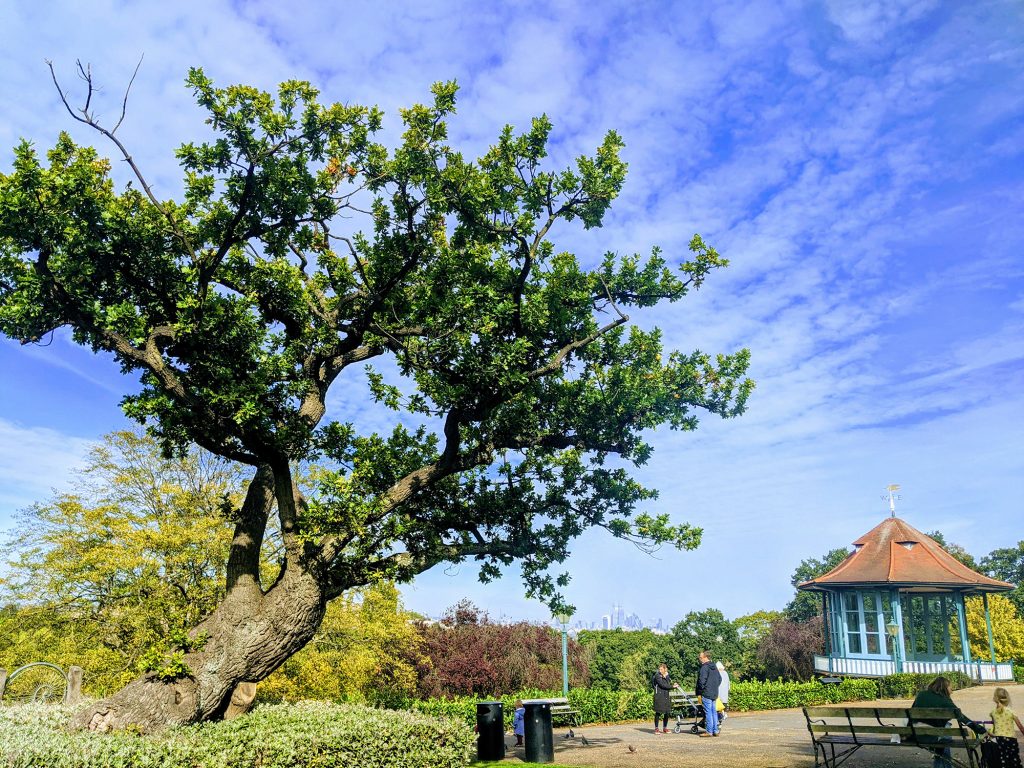
English Oak
Scientific name: Quercus robur
Location: Bandstand Terrace
One of the most common trees in Britain, this Oak is the Horniman Gardens’ oldest tree.
Oaks live for a very long time – the oldest in the UK is thought to be thousands of years old. Our Oak hasn’t been around that long but has been here since before the Horniman itself.
Oak trees are known as ‘keystones’, because of the huge impact they have on their environment. One oak tree supports over 500 species, and some oaks support more than 280 types of insect, more than any other tree in the UK.
The trunk of this oak tree is hollow, perhaps because it lives on the site of the old gardens waste compound. Machinery may have caused root compaction.
If it lived long enough the oak would close up this hollow. However this oak is coming to the end of its life. It’s dying back every year, slowly reducing its canopy.
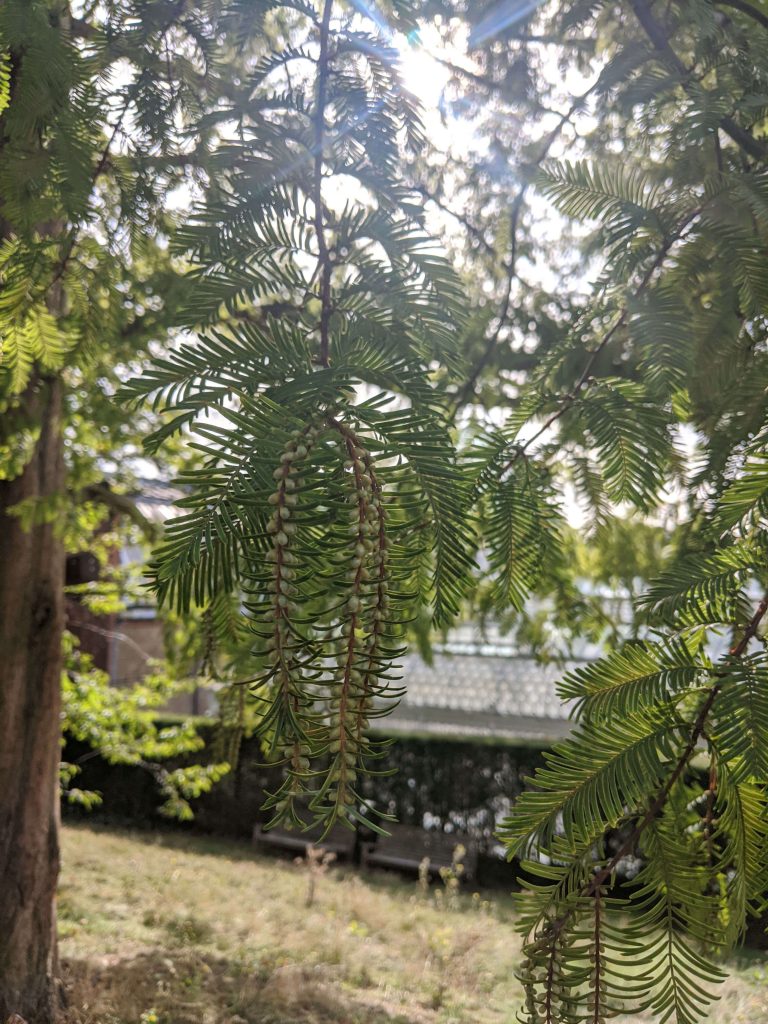
Giant Sequoia
Scientific name: Sequoiadendron giganteum
Location: Blue Badge car park
The Giant Sequoia trees are some of the biggest on Earth, and they can live for 1000 years. During that 1000 year lifetime, a Giant Sequoia will offset the carbon footprint of one human.
Native to California, these trees were first introduced to the UK in the mid-19th century. The largest known of its kind is in the Giant Sequoia Park in California. It has a ground level diameter of 11 metres.
The English originally named the Giant Sequoia ‘Wellingtonia’ after the Duke of Wellington, whilst the Americans wanted to name it ‘Washingtonia’.
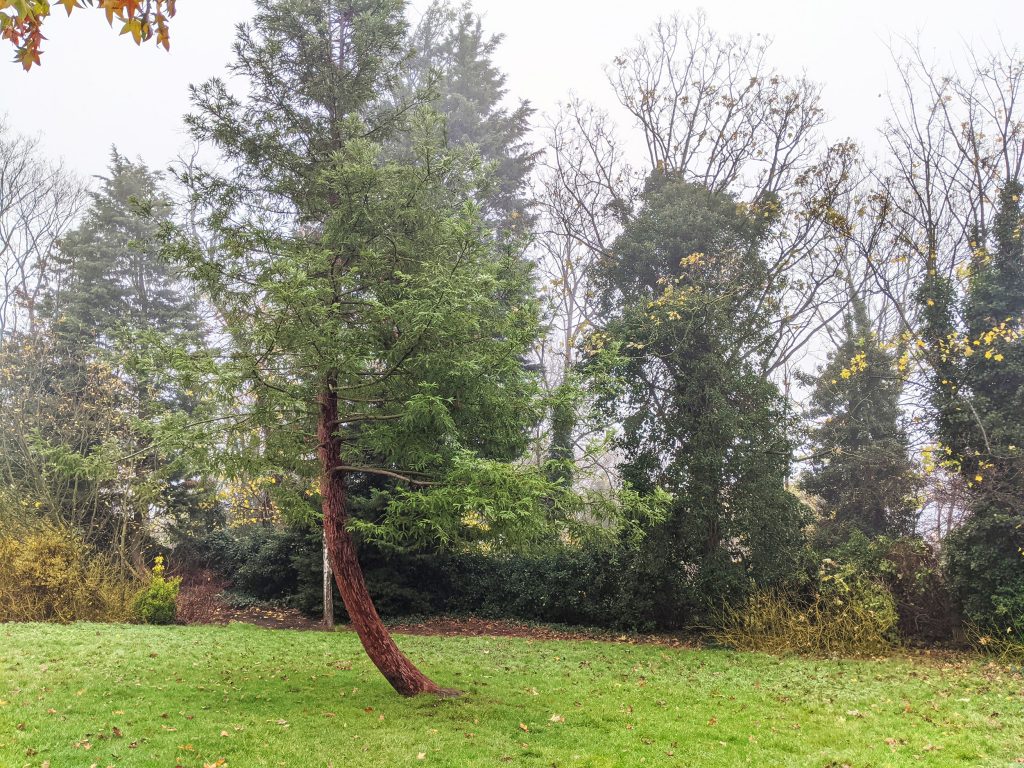
Our coast redwood leans out
Scientific name: Sequoia sempervirens
Location: South Downs Meadow
The Coast Redwood grows taller than any other tree on Earth.
The Coast Redwood we have at the Horniman has a bent trunk, giving it a bow-legged look. This is probably because of being pushed over whilst young. It stands at an angle of 45 degrees.
Coast Redwoods are great at capturing carbon. Per area Coast Redwood trees will capture more carbon from the atmosphere than any other forest.
They are not native to the UK, but come from North America, growing naturally along the Pacific Coast. They are listed as endangered, with many Coast Redwoods being logged for timber.
Coast Redwoods have delicate branches and a soft stringy bark.
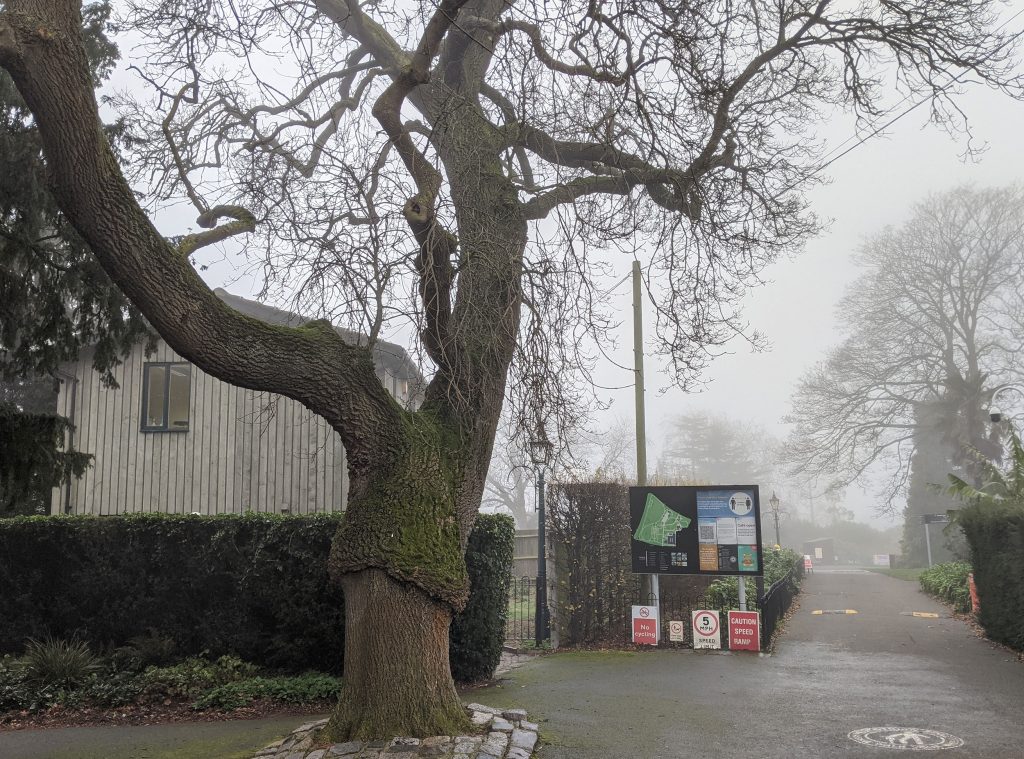
The weeping narrow leaved ash is the biggest tree of its kind in the UK, and is incredibly rare.
Scientific name: Fraxinus angustifolia ‘Pendula’
Location: Horniman drive Gate
This tree may be slightly forgotten about on your visit – right at the back of the Gardens near the gate, and labelled with the wrong scientific name, it might be easy to dismiss it or think of it as unimportant.
However this is the biggest tree of its kind in the UK, and is incredibly rare.
The weeping narrow leaved ash is grafted onto the common ash specimen, giving it a Frankenstein feel.
This tree has had a spot of TLC in recent years to give it more room around the trunk (it was encased in concrete) and a rail to save it from any cars or vans passing by.
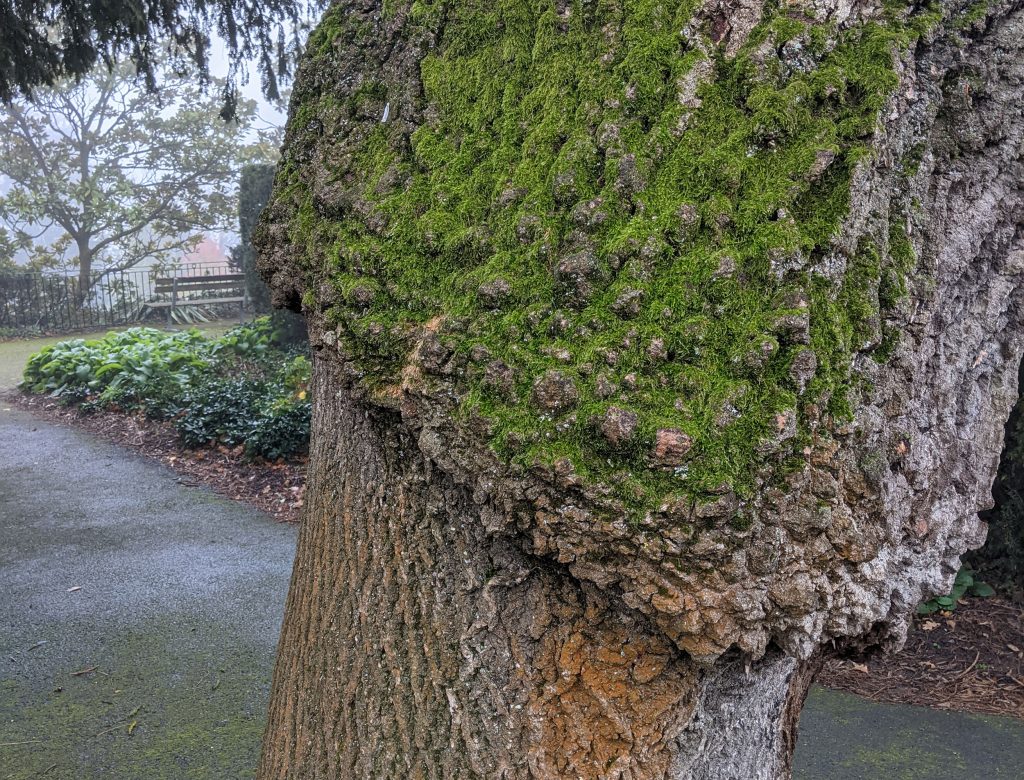
There is a visible bulge where the tree was grafted onto another specimen
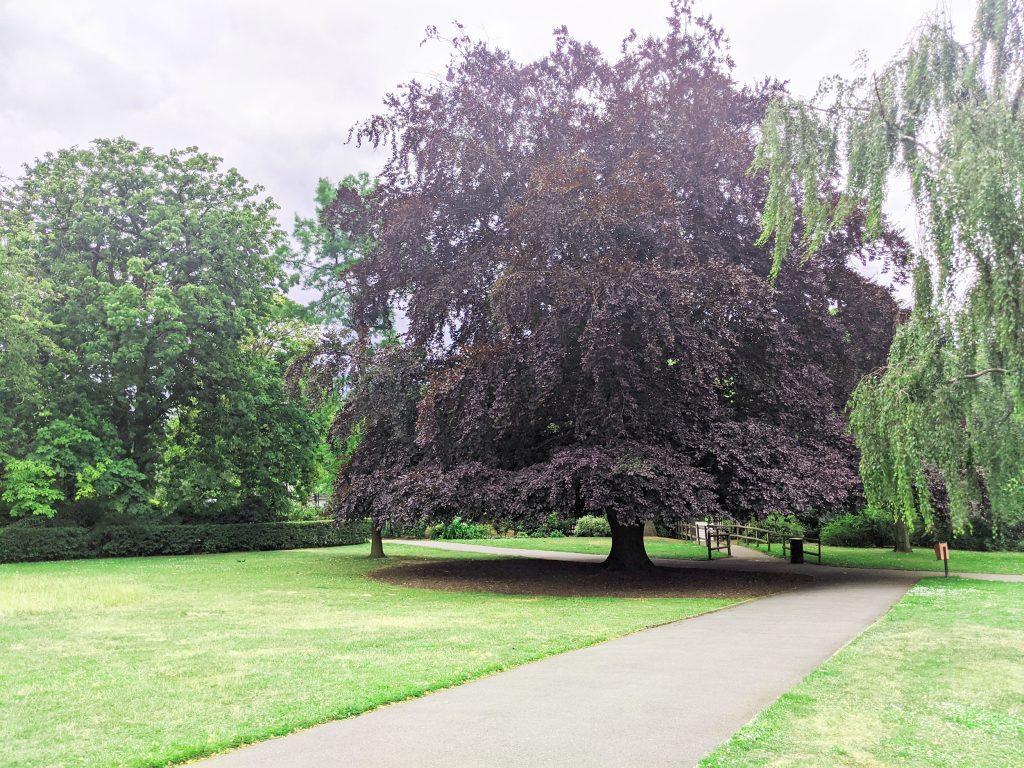
The copper beach with it’s dark leaves in spring and summer
Scientific name: Fagus sylvatica ‘Riversii’
Location: Parallel to London Road, in between the Avenue and the Grasslands Garden
This is a tree of many colours. In spring its leaves are purple, turning more coppery in the autumn. The leaves on the lower branches are green, with the leaves at the outer edges of the canopy turning the richest purple.
The ‘sylvatica’ in the scientific name of this tree means ‘forest loving’. Our copper beech is almost as wide as it is tall, but if it was in a forest it would be tall and slender, reaching for sunlight above the forest canopy.
The Copper Beech is important to many organisms. Mice and woodpeckers feed on its seeds, the holes in the tree are great nesting sites for birds and bats, and wood boring beetles breed in different parts of the tree.
This is a perfect example of why trees are so important to our ecological systems, and how they remain useful, even when they’re dead.
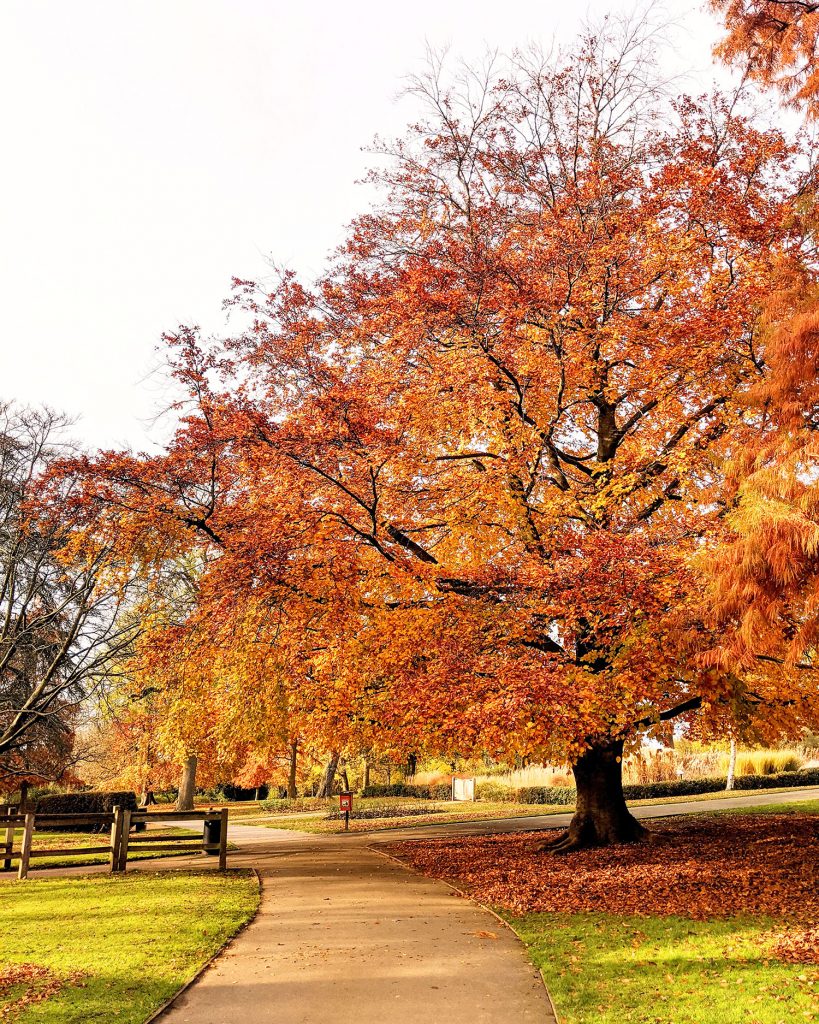
The gold leaves on the copper beech in autumn
Want to keep exploring?
Listen to an audio tour of the trees in the Horniman Gardens.
Use this map to find even more trees in the Horniman Gardens.